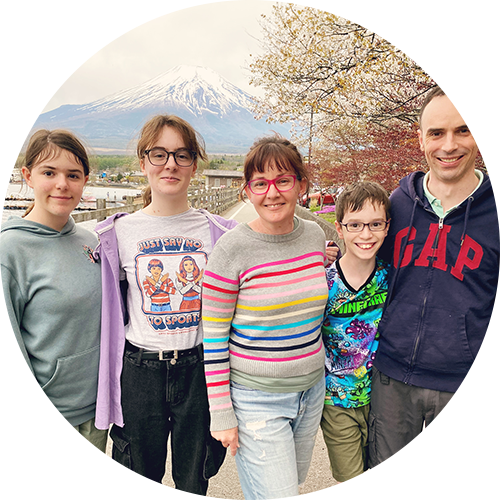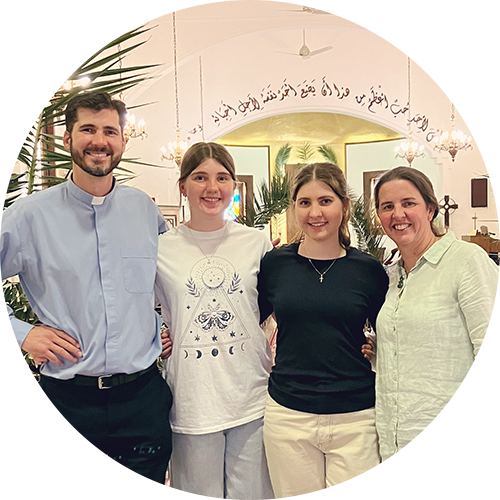Preaching Christ in traditional rituals in Toraja
CMS missionary Andrew Buchanan has been serving in the Church of Toraja in Indonesia since 2002. As the church faces the resurgence of traditional grave cleaning practices, Andrew explains why and how he has recommended to ministers to take part in this ritual.
The Church in Toraja ministers to a region that only came into contact with European civilisation and the gospel a little over one hundred years ago. While the area is now almost entirely Christian and, for the most part, well integrated into the modern Indonesian state, it is not Western. In considering whether to take part in grave cleaning rituals, the Reformed tradition, of which the church is proud to be a part, sets important boundaries, but gives little specific guidance. What follows seeks to give some indication of why and how I have recommended to some ministers to take part in this ritual.
Traditional culture and spirituality in Toraja
The traditional Torajan culture sought power for life from three main divine sources: the gods, divine ancestors and field spirits. As in the Old Testament, what was meant by ‘life’ was the continued existence of village and family. The Toraja region is far more fertile than the Middle East of Israel’s time, nestled as it is in the hill-country in southern Sulawesi. Yet the fragility of existence was still evident—without fertility in crops, livestock and children (the three-pronged form of blessing as locally understood), human life would not continue. Consequently, the spiritual powers were negotiated with through a variety of rituals, from small offerings to the field spirits before planting, through to massive seven-day funeral feasts that resulted in a divine ancestor.
For the Dutch missionaries who came after the Dutch pacified Toraja in 1908, these rituals were clearly idolatrous. At the same time, their missiology recognised the importance of indigenous culture, and they appreciated the strong familial and societal solidarity that these rituals expressed and strengthened. In good analytical fashion, they sought to divide up rituals into religious and social components. Slaughtering animals to feed (many hundreds of) guests was acceptable for Christians; regarding the slaughtered animals as provisions for the journey of the soul to the place of the dead was religious, and a rejection of Christ as the sole means of salvation.
This approach did allow for the preservation of much of the traditional culture. However, as church theologians themselves argued in official publications over twenty years ago, this approach also atomised the culture. The social aspects of the rituals were cut off from their religious meanings with the result that social meanings, such as the family status displayed by the ceremony, were set loose from their traditional bounds. The religious meanings were replaced by Christian meanings conveyed in traditional Calvinist forms (i.e. Calvinist liturgies centred around preaching) that did not use local forms. This has meant that the social meanings have not been brought into connection with Christian meanings either. In funeral ceremonies, for example, the liturgy each evening becomes a Christian island in the middle of sometimes extravagant displays of family identity.
The advantage of using a local symbol is that it becomes an arena in which the legitimate questions or needs behind the symbol, with all their affective power, can be given Christian answers—the symbol becomes an arena for preaching the gospel.
Though the funeral ceremony continued to thrive because its social function could be separated out, other rituals were disallowed, such as the component of house-consecrating rituals where people were possessed by field spirits. A significant ritual that fell in between was the ma’nene’ ritual, a regular, usually annual, visitation to family grave sites where the sites are cleaned, and a buffalo and some pigs are slaughtered. In the traditional religion, these were clearly offerings to the ancestors as divine powers. (The attraction of ancestors as sources of blessing was because they could be expected to be interested in their descendants and had experienced life on earth.) Again, alongside these religious meanings, the ritual also had neutral or positive aspects in building family identity and solidarity. However, its religious aspect seemed much more intrinsic to the ritual and by the end of the twentieth century, there remained only one remote area where it was still practised by Christians. Recently, though, and against expectations, it has seen a revival. In more and more areas, extended families are holding this ceremony and asking the church to participate by providing an opening and closing service.
The public meaning of rituals
The first question this resurgence raises is whether churches accept or decline to participate, or even declare such ceremonies as inconsistent with faith and, therefore, sin. In 1 Corinthians 10, Paul takes participation in idolatry very seriously. Participation in restaurants attached to temples means fellowship with the demonic powers behind the false god who hosts the meal. This is a public meaning that is not cancelled out by the non-idolatrous intention of the ‘strong’ Christian, who participates knowing that an idol is nothing. The public meaning of ceremonies is thus a real concern, and where this ritual is being conducted as part of the traditional tribal religion, it is clearly idolatrous.
However in many areas, the consensus seems to be that there is not a public intention to worship ancestors, though there may well be individuals who, at some level, view the ceremony as a source of blessing connected with them. What, then, of Paul’s argument that those who are strong in faith should not lead those who are weak in faith astray (1 Corinthians 8)? If the argument was that anything that can be taken in an idolatrous way at a personal level should be avoided, then we would need to stop using the Bible, since there are many examples of people using it as a charm, not just in areas with tribal religions, but even in some areas of seventeenth century Reformed Europe under Reformed preaching. The difference, of course, is that the public meaning of the Bible (i.e., that it is teaching, not a charm) is largely under the control of the church, whereas pagans controlled what eating at a pagan temple meant. It would seem that where the church is being invited to pray at certain points during the ritual and to close the ma’nene’ ritual with explicitly Christian content, there may well be an opportunity, even an imperative, to use this symbol to preach the gospel.
The danger of syncretism
To illustrate what may be at stake, we can compare two theological terms in the Torajan language, one taken from the local culture and the other imported from Indonesian culture. Puang Matua is the name of the chief god in the traditional religion and is used in the Torajan Bible to translate ‘Lord’ (Yahweh in the Old Testament and kurios in the New Testament when being used of God). Ever since the Greek translation of the Old Testament used Greek words usually applied to pagan divinities to speak of the one true Creator, this strategy has run the risk of semantic contamination—of pagan concepts of divinity mixing with Christian ones.
However, there is also a risk when new terms are imported. The Torajan Bible does not use either the Torajan word for the place of the dead (Puya) or their word for sky (as the Old and New Testaments do) to express the concept of heaven. Rather, the translators imported the Indonesian word for heaven. Many adherents of the traditional religion interpreted this to mean that traditional adherents go to Puya, whereas Christians go to heaven. This was a consideration in deciding whether to get baptised—did they want to go to Puya with their parents, or to heaven with their baptised children? Here, the price of semantic purity was a dualistic form of syncretism. The advantage of using a local symbol is that it becomes an arena in which the legitimate questions or needs behind the symbol, with all their affective power, can be given Christian answers—the symbol becomes an arena for preaching the gospel.
Felt needs are an opportunity
The increasing popularity of the ma’nene’ ritual suggests that it is meeting some felt needs. Some of these may be social, for example, responding to threats to family solidarity brought about by the modern world and increasing prosperity. Some needs may well be religious. It does seem like the church has lost some of its spiritual authority over the last twenty years, so this ritual may be one of several movements challenging the status of the church as the main spiritual guide of the Torajan people. This would suggest that people are seeking blessing from ancestors in a syncretistic way, though not necessarily at a conscious level.
This felt need—blessing—is what provides the opportunity presented by the invitation to pray and preach during the ritual. While Westerners prefer to talk about the gospel in relation to the soul (choosing, desiring, believing), the New Testament does also use the physical signs of blessing in the Old Testament as metaphors for spiritual blessing. Within an overarching metaphor of life, Jesus presents himself as true food and drink, and congregations as land or plants that bear fruit. At the heart of spiritual blessing is the Spirit (Galatians 3:14), who also gives physical life (Psalm 104:28–30). Responding in faith to the word of God leads to blessing like that of a field that bears fruit after rain; unbelief leads to weeds and the curse of fire (Hebrews 6:7–8). Interestingly, the book of Hebrews also presents Jesus as the one who provides what is being sought from the ancestors. He identifies with us as family (Hebrews 2:10–18), knows our earthly struggles from the inside (Hebrews 4:15–16), and has opened up the path to eternal life by his own great sacrifice (Hebrews 10:14). Presenting the gospel with these emphases makes it clear why seeking blessing from ancestors is foolish and does not give Jesus the honour that is his due.
Syncretism is complicated. Some things are not redeemable and need to be rejected. But using local symbols, such as the Torajan grave cleaning ritual, can help the church to preach Christ in ways that connect with local needs, and reduce the danger of dualisms springing up as unredeemed symbols answer questions that the church is ignoring.
CARE
CMS missionaries are constantly seeking to understand and navigate their host cultures in ways that uphold the local culture and people, while also giving honour to God. One way you can care for them is by sending a message encouraging them to persevere in this and asking them what you can specifically be praying for in this area.












































































































